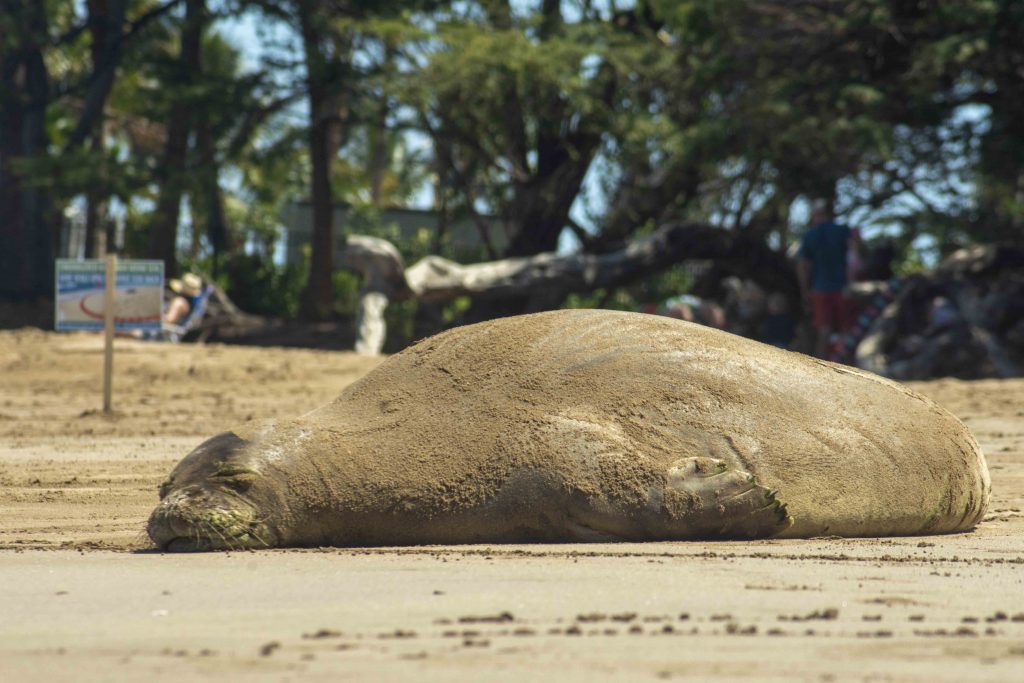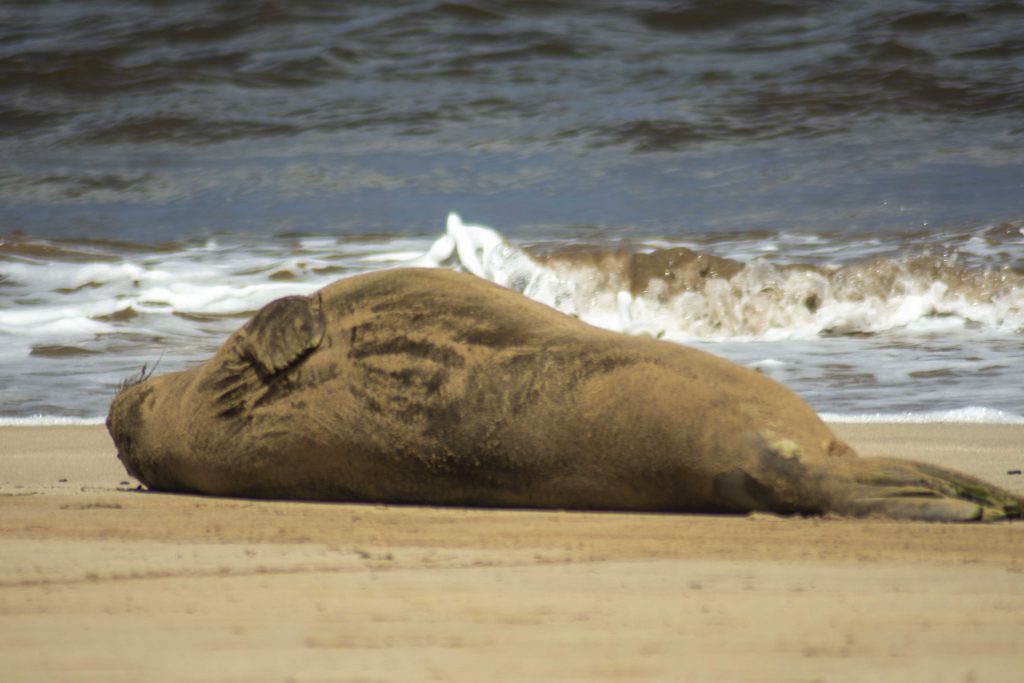‘This is your lucky day;’ Two Hawaiian monk seals sunbathing on Kīhei Beach
With the tide gently rolling onto a North Kīhei beach Tuesday morning, two endangered Hawaiian monk seals were sunbathing and getting some rest.
“This is your lucky day,” a regular beachgoer told a family from Oregon. “It’s rare to see monk seals on this beach; and I’ve never seen two together.”
The two monk seals, an adult male and an adult female, were first spotted about 9 p.m. Monday night by people walking the beach, said Jo-Anne Rively, a volunteer with The Marine Mammal Center Hawai’i who was “babysitting” the seals.
As is usually the case, the female was larger than the male.
After the seals were checked from a distance to ensure they were not stressed or injured, personnel from the nearby Hawaiian Islands Humpback Whale Sanctuary established a perimeter of about 50 feet to allow for undisturbed sleep. A Maui police officer also showed up to make sure the seals were getting their proper space.
On Maui, the National Oceanic and Atmospheric Administration (NOAA) had been the responders to the monk seal hotline. But that changed on April 1 when The Marine Mammal Center Hawai’i partnered with NOAA’s Pacific Islands Regional Office, and working under NOAA’s permit, became the primary responder, said Lauren Van Heukelem, Hawaiʻi response manager for the conservation organization.
The Marine Mammal Center originally began more than 40 years ago in Sausalito, CA, and expanded to the Big Island in 2014, where it operates the Ke Kai Ola hospital. Now, the center has expanded to Maui. The organization’s mission is to rescue and rehabilitate sick, injured and orphaned Hawaiian monk seals and to advance global ocean conservation with each healthy monk seal released back to the wild.
On Maui, sightings of monk seals vary. Some days, there may be up to 6 all around the coastline and other days none.
Volunteer Rively arrived at the Kīhei beach about 8:30 a.m. Tuesday to put up the monk seal educational signs that also establish how close people are allowed to get to the resting seals.
She said everyone has been “respectful” to the seals, and the seals have been respectful to each other: “They did roll over and stare each other in the face. They snorted at each other; it was pretty cute, but not threatening. They looked at each other and rolled away. I understand if it was two males, it would not go well. They’d be fighting for that space.”
Monk seals are solitary by nature, but Van Heukelem said: “You will see them together from time to time. They are a smaller population, so they are not seen together as often. But when they are in the same area, they will interact.”
Hawaiian monk seals are only found in the Hawaiian archipelago and are one of the rarest seal species in the world. Van Heukelem said the latest census found the population now is at about 1,500 seals, about 100 more than the previous count. “The good news is the numbers are increasing,” she said.
Just last month, a juvenile Hawaiian monk seal was found in Lahaina with a hook in its mouth. It was taken to the Ke Kai Ola hospital for care and was released back into the waters off Lahaina.
Since 2014, the center has rehabilitated and released 37 monk seals, according to the center’s website.
But there was no need for rescue on Tuesday. The two seals were simply resting.
Rively said: “They’ll go back in the water when they get hungry or want to go for a swim.”
To report a monk seal sighting, call the hotline at 808-292-2372. The Marine Mammal Center Hawaii also is looking for volunteers on Maui. For more information, go to www.marinemammalcenter.org.

















